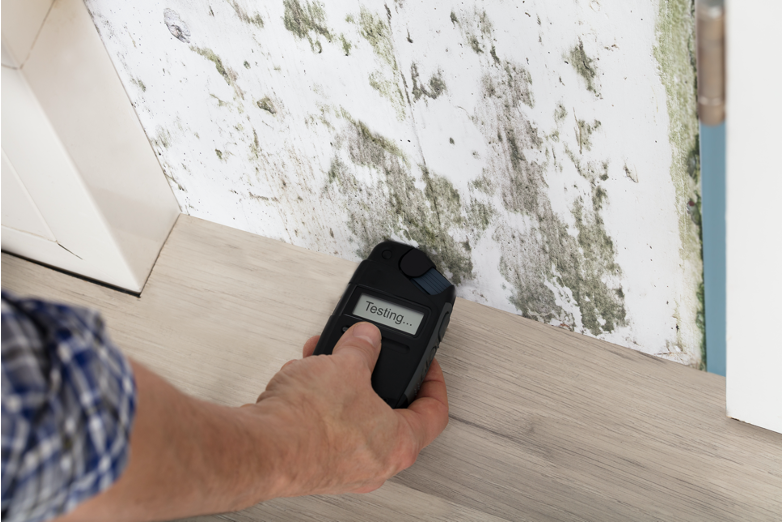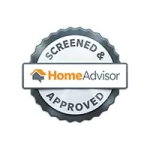MOLD REMOVAL AND RESTORATION LEHIGH VALLEY, PA
Serving the Lehigh Valley & the Surrounding Areas
- Fully Insured
- Expert Technicians
- IAQA & NADCA certified
- Local family owned business
- FREE estimates for some services
- Friendly, Responsive and Professional

In the event that a building experiences water damage, mold can grow quickly within 24 to 48 hours and can spread to different areas. Mold can lead to various health problems including allergic reactions to other severe issues, such as other respiratory tract infections. At Air Care and Restoration, our team of extensively trained and qualified experts has helped countless home and business owners safely remove mold.
How Mold Grows and Spreads
Mold can grow indoors and outdoors and is mostly attracted to wet areas. Spaces vulnerable to mold include areas where there is an immense amount of water, such as a house with water damage, leaks in the roof, pipes, or where there has been flooding.
Mold can also grow in other places such as paper products, paints, wallpaper, insulation, drywall, carpet, and more. Mold can enter your building in a variety of ways. The fungi can enter indoors through windows, doorways, vents, and heating and air conditioning systems. While outdoors, airborne can sneakily attach itself to clothing and pets. When mold first enters your premises, it is not always known until you begin to feel the effects through smell or health factors.
It is imperative to acknowledge the issue quickly, as a delayed response can lead to growth. Building materials can provide a comfortable setting for mold to grow. As mentioned, wet materials on buildings such as paper products, cardboard, ceiling tiles, and wood products are a few places that mold attaches itself to. Wet mold that is the most common mold found in these areas includes Cladosporium, Penicillium, and Aspergillus.

Mold Symptoms
Not all mold can be viewed visually. Although you might not be able to visually see mold, there are certain signs that can indicate the presence of mold. Common symptoms that might indicate the presence of mold can lead to an allergic reaction. If you have continuous symptoms of congestion, sore throat, itchy eyes, skin rashes, and fatigue, call Air Care and Restoration today for a consultation. It is vital to address the issue of mold immediately as it can trigger severe reactions such as asthma attacks. Those with health conditions and weakened immune systems are also more likely to feel the effects of mold.
How Mold Grows and Spreads

We address the issue in a thorough approach by beginning with mold testing procedures. Testing is a vital part of the process to identify and quantify the mold.
Our team will collect samples from different parts of your building and immediately send them to a certified microbial lab.
Within three to seven days, you will have an answer to whether or not mold is present in your building. Our 12 step mold testing procedures not only confirm the presence of mold but also the amount of mold and type.
Once this information is confirmed, our team will work with you to provide a plan to address the cause of the mold and ensure it will not return.
Mold Containment
At Air Care and Restoration, we will work quickly and efficiently to provide quality service to your building. The first step in mold removal is to ensure that the spread of mold is minimalized. We ensure containment by using a durable heavy-duty plastic film, 4 mil polyethylene film. This film is ideal for containment zones so that we can work to fully remove the mold without worrying about it spreading. We also use a high-efficiency particle air filtration to help in the process of removing mold spores. This filtration system also makes it more difficult for mold to continue growing, therefore, maximizing our services promptly. In the areas of the building that need treatment, we carefully use a HEPA vacuum for personal items that may contain mold spores. As mold can latch onto anything, this will help ensure the mold is contained.
Getting Started
In order to ensure full mold removal and avoid it coming back, disposing of contaminated or wet materials is a must. Materials such as carpeting, trim, dry wall, subflooring, and insulation can all contain mold, and if not fully removed, can cause further issues. Our team will carefully identify contaminated materials and seal them so that they can be removed. To prevent continuous and extra growth, an antimicrobial agent is applied to your building surfaces such as subflooring, floor joists, roof rafters, and exterior sheathing.
Treatment
We use top of the line antimicrobial cleansers to kill the spread of microorganisms on contaminated surfaces. After we thoroughly applied the cleanser, we will continue to cover the area with a coat of antimicrobial to ensure preventative care and avoid future growth. Our high-efficiency filter will remove the last of the airborne mold spores from your building. After our elaborate mold removal strategies, we will test your building once more to ensure the mold levels are reduced.
Post-Treatment
At Air Care Restoration, we dedicate our services to going the extra mile for our clients. Although it is almost impossible to remove mold fully, the work to reduce the level of mold in your homes is important. The issue about mold is that greater concentrations of mold can cause risks and health issues. That is why it is a priority for our team to check mold levels have been significantly reduced to normal levels. To ensure our mold remediation services are successful in extracting the mold, we will provide our additional testing. Similar to the beginning stages, we will go around your building and collect different samples. Within days, the test results will be in to confirm your building’s level of mold officially being reduced. Upon completion, a certificate will be issued for your files.
Restoration
We know that it can be a hassle to refurbish your space after mold removal services. Air Care and Restoration offer quality restoration services. Our team of experts is certified to restore dry walls, trim, flooring, and more so that your building can be back to how it was before. Our certified contractor has the skill and experience to restore your walls and flooring, and remove all contaminated or damaged materials.
What to Know About Mold
There are over 100,000 known types of mold, but not all of it is dangerous. Mold is everywhere outdoors and potentially can sneak infoors. Although most types of mold can be harmless, you do not want the fungi to seep into your building. Once mold makes it’s way onto your property, it becomes potentially harmful to your home. Mold benefits from damp areas in visible parts of a building, but can also thrive in hidden areas. If your building experiences water damage, mold can start growing as quickly as 24 to 48 hours. To avoid mold growth after a flood, water damage remediation is necessary.
Mold Removing Tactics to Avoid
When coming across mold, it is not always a quick do-it-yourself fix to remove the problem. If you find mold in your building, do not paint over it. Paint does not get rid of the issue, and the fungi will eat through the paint. Before you decide to paint your building, remove the mold as soon as possible to avoid a worsening issue and having to repaint. There is a common belief that bleach kills mold, but this is not always the cause. Although bleach skills live mold, it does not kill mold spores. In fact, removing mold with bleach and water can make the fungi grow even more as it will begin to attach itself to the moisture.
How to Prevent Mold
The most common way to know if your home or building is at risk for mold is by regularly inspecting the premises and searching for water damage or mold that is visual to the eye.
If you see a small area of mold in your home, do not ignore it. Small areas of mold can potentially grow to wider areas and result in more costly repairs. Providing regular maintenance to water leaks and infiltration can lower the risks of mold growth.
Other ways to avoid mold are by controlling the humidity levels, ventilating areas most susceptible to molds such as bathrooms and cooking areas, and extensively cleaning after a flood.
If flooding has occurred in a carpeted area, consider removing it right away if it has been soaked for a while and can’t be dried. In areas that are more vulnerable to floods, such as basements and bathrooms, consider avoiding carpeting.

How to Prevent Mold
- There are areas in your home that are more prone to attract mold than others. Showers and bathtubs are commonplaces to find mold. These areas in your home are generally the dampest since it’s used more frequently. Mold can hide in a few places such as under hair products, shower curtains, and showerheads. Other common places in bathrooms include walls, carpeted areas, sinks, and toilets. Mold can grow just about anywhere including under leaky faucets and toothbrush caddies. If your bath area is not ventilated properly, it is more likely that mold spores will grow. Ventilation can be useful during a shower and after for extra precaution. Ensuring counters and floors are dry, and checking for potential leaks in pipes and faucets is also recommended.
- Mold can also find its way into unwanted places, such as your bedroom. If your body is more prone to swat at night, any excess moisture can create mold. Knowing that mold can grow on your mattress is an unpleasant thought and potential reality. Consider investing in a mold-resistant mattress, so that you can sleep in comfort without any worries. If you also tend to spill water or other liquids onto your mattress while resting, a mold-resistant mattress might also be favorable. Another place to check in your bedroom, as well as other rooms, includes windows. Windows can collect condensation as a result of humidity. Regularly checking your window seals can be an effective way to ensure there is no potential growth.
- Air conditioning and heating systems provide comfort during hot summer days and chilly nights. While these units are beneficial to consumers, they can also contribute to mold growth. Ensure you check vents regularly for mold. If you would like to decrease the possibilities of mold, there are a few ways to consider. Aside from considering a mold-resistant mattress or potentially a waterproof mattress cover, a dehumidifier in different rooms of your home can remove moisture from the air.
- Plants in your home can also cause mold. If you are a plant fanatic, ensure to observe your plants regularly. If you notice mold growing on one of your plants, consider leaving it outside for a while before it leaches onto other items.
- The most common places where mold can reside include the basement and attic. Regular maintenance of ventilation and insulation systems, vents, and furnaces is necessary to avoid massive breakouts.
Dehumidification Services
Be comfortable knowing you live in a mold-free environment by installing a dehumidifier. Additional dehumidifiers can also assist with eliminating allergies, protecting your belongings from moist environments, avoid damage to electronics, eliminate unpleasant odors, and improve air quality. Our dehumidifier will ensure you are comfortable year-round by correcting your building’s humidity and controlling mold growth.
Why Choose Air Care and Restoration
Our team is dedicated to serving you. We work on mold containment in multiple areas including, attics, crawlspaces, drywall, and other areas affected by the growth. We take pride in our ability to provide the most effective mold remediation services at an affordable price for all. After our services are completed, we will guarantee a warranty in case you run into future issues.
Contact Us Today
Expect quality service when you choose Air Care and Restoration. If you expect your building is infested in mold, our team of trained and certified technicians will investigate, test, and solve issues in commercial and residential settings. With over 25 years of experience, Air Care and Restoration are guaranteed to provide quality service. Our top-rated company offers a free estimate for mold testing and a two-year no mold return warranty. Call us today at (610) 890-6300 to schedule an inspection or ask questions.






